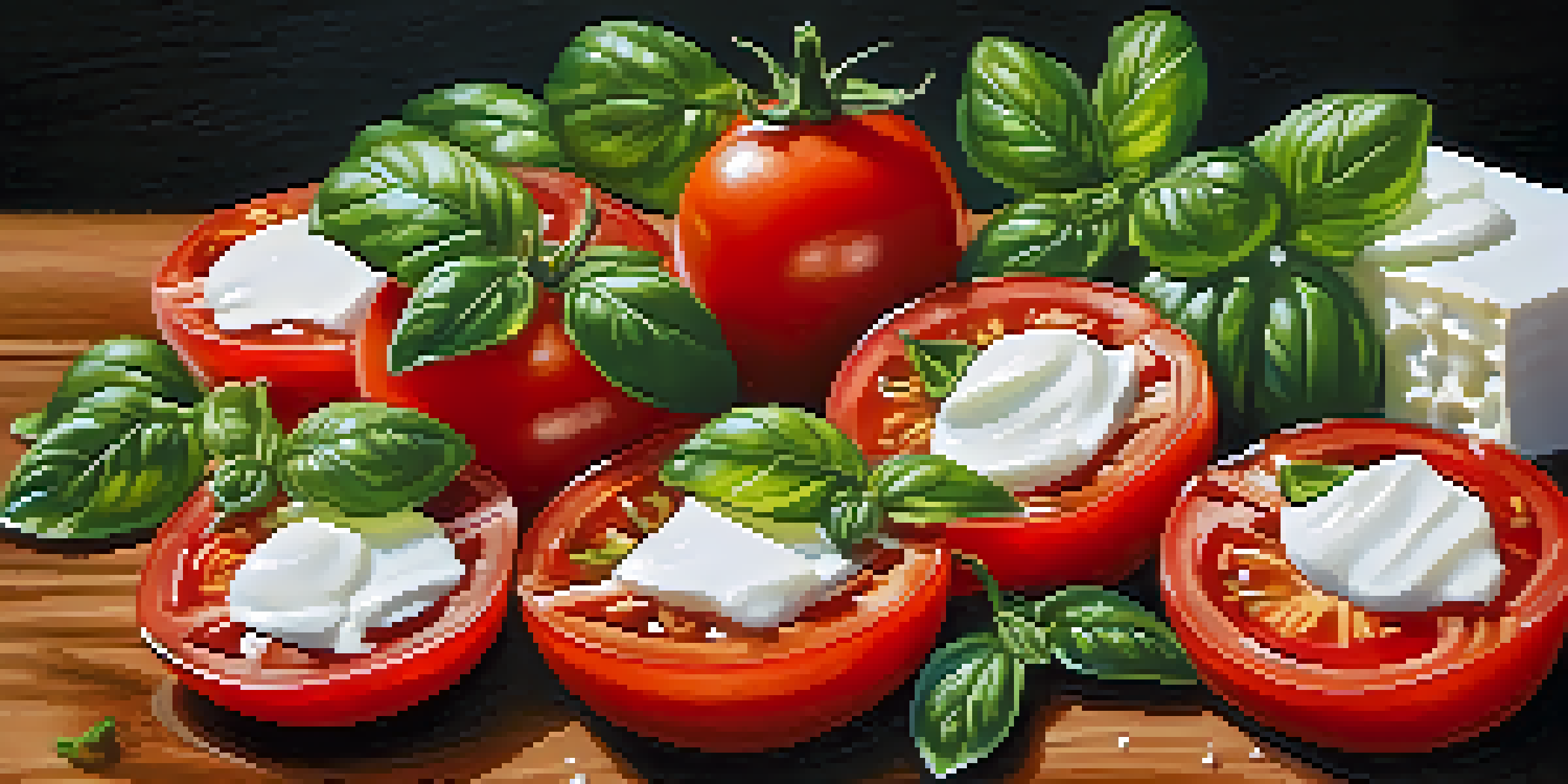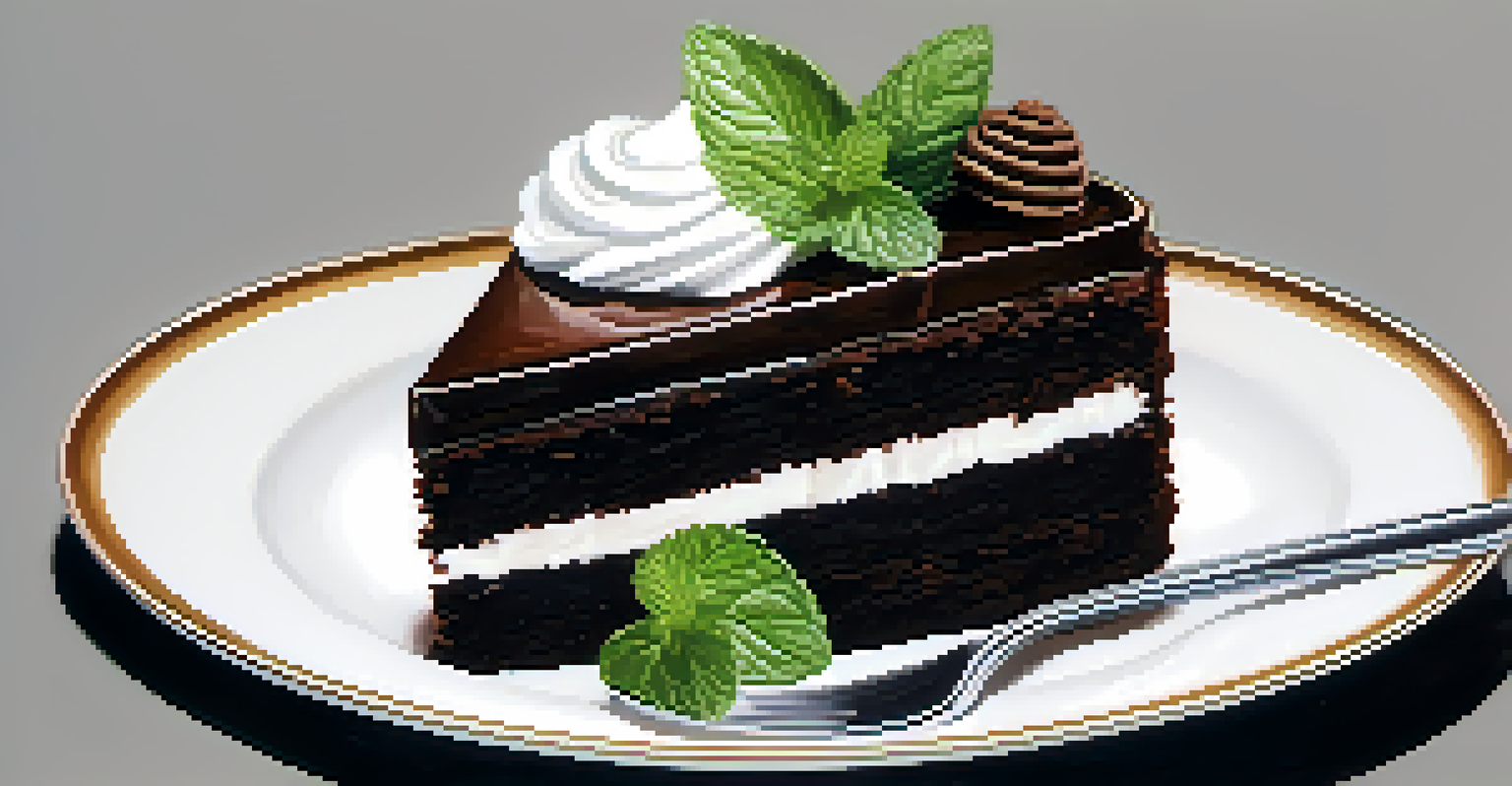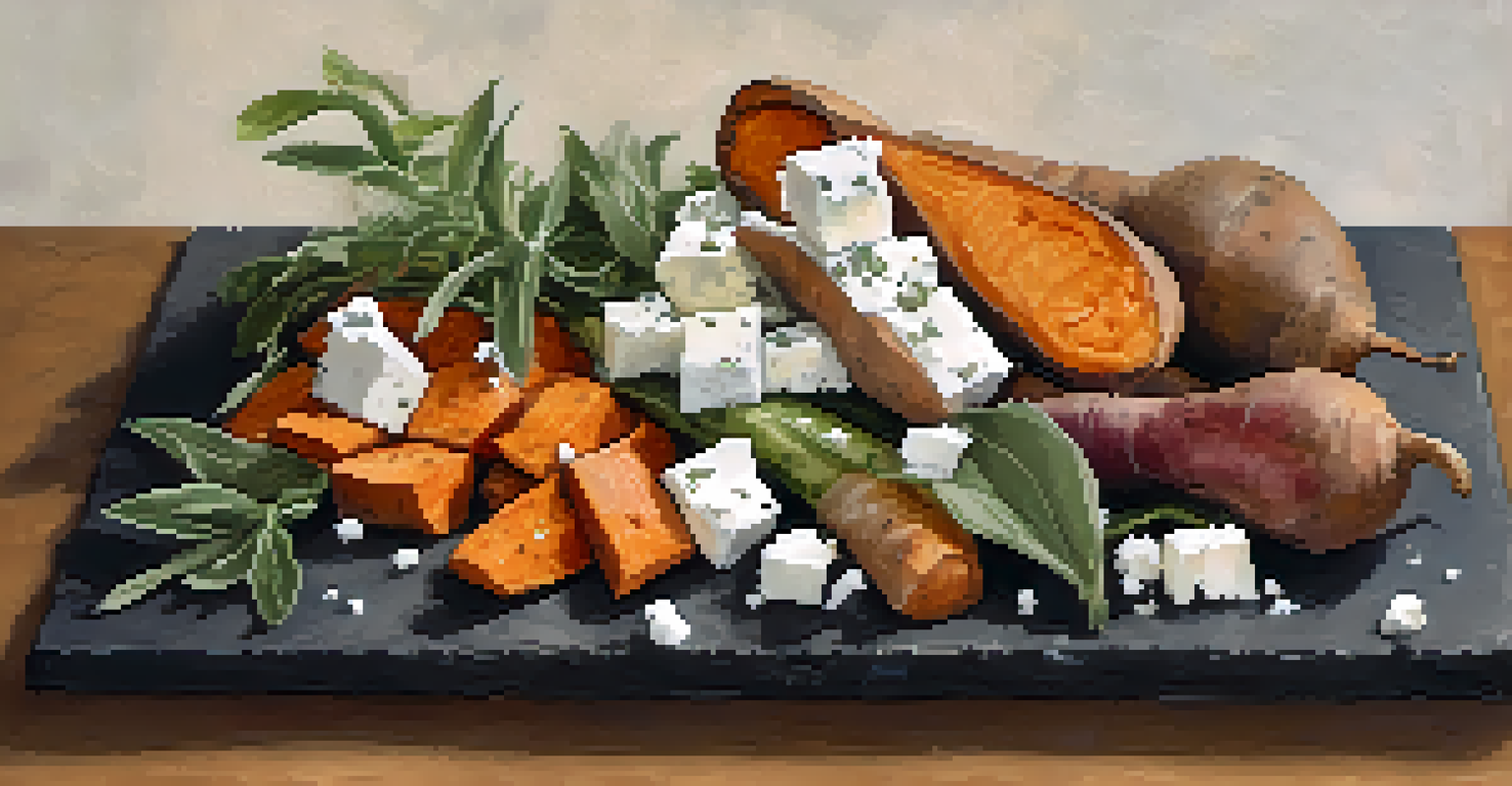The Art of Food Pairing: Culinary Compositions that Delight

Understanding the Basics of Food Pairing
Food pairing is the art of combining flavors to enhance a dish's taste. Think of it as a dance where each ingredient complements the others, creating harmony on your plate. For instance, sweet and salty flavors often create a delightful contrast that tantalizes the taste buds.
The only thing better than talking about food is eating food.
At its core, food pairing relies on understanding flavor profiles—sweet, sour, salty, bitter, and umami. Each of these profiles plays a unique role in the overall experience of a dish. By balancing these elements, chefs can transform a simple meal into a culinary masterpiece.
Moreover, the science behind food pairing suggests that certain ingredients share chemical compounds, which can enhance their compatibility. For example, tomatoes and basil both contain similar flavor compounds, making them a classic pairing in Italian cuisine.
The Role of Texture in Food Pairing
While flavor is crucial, texture also plays a vital role in food pairing. Combining different textures can add depth to your dishes, making them more enjoyable to eat. Imagine the satisfying crunch of a toasted nut sprinkled over a creamy soup—it’s this interplay that excites our palate.

For instance, think about a rich chocolate cake paired with a light, airy whipped cream. The contrast between the dense cake and the fluffy cream not only balances the flavors but also enhances the overall eating experience. This is where creativity in food pairing shines.
Flavor and Texture Harmony
Combining complementary flavors and textures can elevate a dish, engaging our senses and enhancing the overall eating experience.
Chefs often experiment with textures to surprise diners and elevate their meals. By incorporating elements like crispy, chewy, and creamy, they create dishes that are not just tasty, but also engaging to the senses.
Seasonal Ingredients: Nature’s Best Pairings
Using seasonal ingredients is a fantastic way to create harmonious food pairings. When fruits and vegetables are in season, they are at their peak flavor, ensuring that your dishes are fresh and vibrant. For example, ripe summer tomatoes pair beautifully with fresh basil and mozzarella in a classic Caprese salad.
Cooking is like love. It should be entered into with abandon or not at all.
Moreover, seasonal ingredients often complement each other naturally. In the fall, think of roasting sweet potatoes and pairing them with earthy sage and tangy feta cheese. These combinations not only celebrate the season but also provide a comforting, hearty meal.
By embracing seasonal produce, you can craft dishes that reflect the time of year, connecting your meals with nature. This approach not only enhances flavors but also supports local farmers and sustainable practices.
Cultural Influences on Food Pairing
Cultural backgrounds significantly shape food pairing traditions. Different cuisines have their unique combinations that stem from historical and geographical influences. For instance, the pairing of fish with citrus in Mediterranean cuisine highlights the region's access to fresh seafood and fruits.
Exploring these cultural pairings can be a delightful adventure. Take Thai cuisine, where sweet, sour, salty, and spicy elements come together in dishes like Pad Thai. Each bite reflects a balance of flavors that tells a story of the culture’s culinary heritage.
Seasonal Ingredients Matter
Using seasonal ingredients not only boosts flavor but also connects meals to nature and supports sustainable practices.
By understanding and appreciating these cultural influences, we can expand our palate and become more adventurous in the kitchen. Trying out international food pairings can lead to exciting new dishes that surprise and delight.
The Science Behind Flavor Pairing
The science of flavor pairing delves into the chemistry of ingredients. Certain foods share volatile compounds, which explains why they taste great together. For example, strawberries and cream both contain similar aromatic compounds, creating a seamless blend when paired.
This scientific approach can help home cooks make informed decisions about their ingredient choices. By learning which flavors tend to work well together, you can experiment with confidence and creativity in your cooking.
Moreover, food pairing apps and resources have emerged, guiding chefs and home cooks alike in discovering new combinations. These tools make it easier than ever to explore the vast world of flavors waiting in your pantry.
Experimenting with Unconventional Pairings
Sometimes, the best food pairings come from thinking outside the box. Unconventional combinations can surprise your taste buds and lead to extraordinary culinary experiences. Consider chocolate with chili, where the heat of the chili enhances the richness of the chocolate.
Another example is the pairing of blue cheese with honey. The sharp, pungent notes of blue cheese contrast beautifully with the sweetness of honey, creating a delightful balance. This kind of experimentation can lead to discovering new favorites.
Cultural Influences Shape Pairings
Exploring cultural food pairings allows us to appreciate diverse culinary traditions and expand our palates.
Encouraging experimentation in your kitchen not only fosters creativity but also invites joy in cooking. Don’t shy away from trying unexpected combinations—food pairing is as much about exploration as it is about tradition.
The Importance of Presentation in Food Pairing
Presentation is key in food pairing, as it affects our perception and enjoyment of the meal. A well-plated dish can enhance the flavors and make the dining experience more delightful. Think about how a colorful salad can elevate a simple meal into a feast for the eyes.
When pairing foods, consider how their colors, shapes, and arrangements can complement each other. For instance, a bright green pesto drizzled over a creamy white pasta not only looks appealing but also invites anticipation for the flavors that await.

Ultimately, presentation is about creating an experience. By paying attention to how you plate your dishes, you can enhance the overall enjoyment of your culinary creations, making each meal feel special.